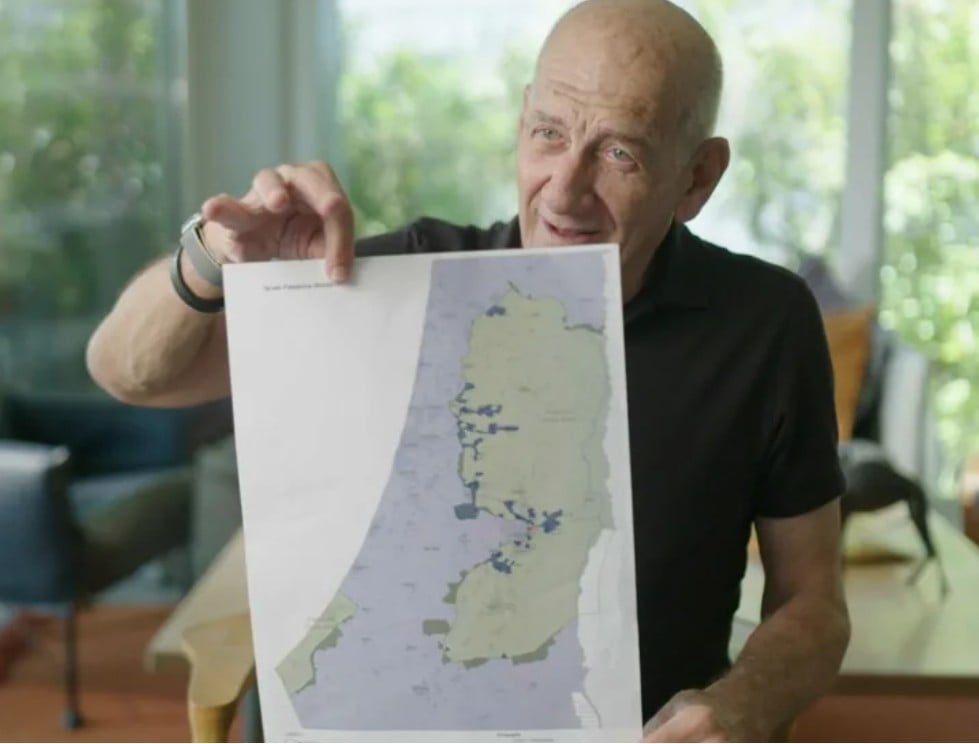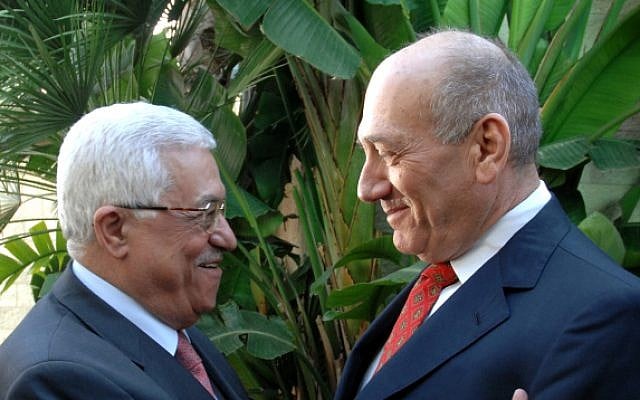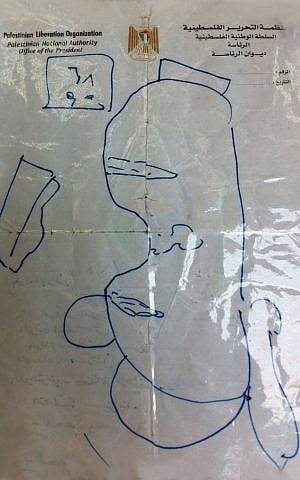



Former prime minister Ehud Omert has for the first time revealed the map for a two-state solution that he showed to Mahmoud Abbas in 2008, and spoke of how he urged the Palestinian Authority president to sign the document right there and then.
As legend would have it, after his meeting with Olmert, Abbas returned to his Ramallah headquarters in the West Bank and hastily drew up a copy of the map on a napkin for Palestinian officials to review. In fact, that sketch was made on a piece of paper that was previously revealed in 2013 along with details of the far-reaching concessions that Olmert offered.
However, the actual map he showed Abbas was, until now, hidden.
Olmert showed the map to documentary-maker Norma Percy as part of a series titled “Israel and the Palestinians: The Road to 7th October,” which was to be available on iPlayer from Monday, the BBC reported.
“This is the first time that I expose this map to the media,” he said.
Olmert and Abbas met in Jerusalem on September 16, 2008.
At the table, Olmert showed the map to Abbas and implored him “Sign it! Sign it, and let’s change history!” he said.
“Prime Minister, this is very serious. It is very, very, very serious,” Abbas said in response, Olmert recalled.
Olmert’s proposal included annexing 4.9 percent of the West Bank to Israel, which would give up a similar area of territory from areas near the West Bank and Gaza Strip to be included in the Palestinian state.
The swap would leave major settlement blocs in Israel, but also require evacuating dozens of smaller settlements.
In addition, Olmert offered to divide Jerusalem, with both Israel and the Palestinians having separate parts as their capital and a “holy basin” — including the Old City and its Temple Mount — to be administered by a committee from Israel, Palestine, the US, Saudi Arabia, and Jordan.
A tunnel or road would join the West Bank to Gaza, which at the time was already under control of the terror group Hamas.
As the meeting drew to a close, Olmert refused to give the map to Abbas unless he first signed a copy. Abbas declined, insisting he needed to study it first with his own experts.
Instead, they agreed to hold a follow-up meeting the next day.
“We parted, you know, like we are about to embark on a historic step forward,” Olmert said in the film.
It would have been “very smart” for Abbas to sign, he insisted, because that way, if a future Israeli leader backed out of the deal, he could have blamed the failure on Israel.
But the second meeting never came about.
Abbas headed back to Ramallah to consult with Palestinian officials. His then-chief of staff Rafiq Husseini, who was with Abbas in the car, said in the film that, right from the start, the offer was not deemed serious.
“Of course, we laughed,” Husseini said. “It is unfortunate that Olmert, regardless of how nice he was… was a lame duck.”
The prime minister was embroiled at the time in a corruption scandal that had already led him to say that he would step down.
Nonetheless, back in Ramallah Abbas sketched out the map for officials.
The proposal went no further and, by December, after months of rocket attacks from Gaza, conflict erupted between Israel and Hamas, in a war known in Israel as Operation Cast Lead.
Elections in Israel then brought to power the more hawkish Benjamin Netanyahu, who has opposed Palestinian statehood.
Some analysts suggest Abbas backed out at the time in large part because he believed that Olmert, who had announced that he planned to resign in order to fight corruption allegations, did not have the political clout to see the deal through. Others see Abbas’s failure to seize the most far-reaching offer ever made by an Israeli prime minister as proof that no offer that Israel might reasonably make would be accepted by the Palestinian leadership.
Though Israeli-Palestinian peace talks were held in the following years. They have been moribund since 2014.


